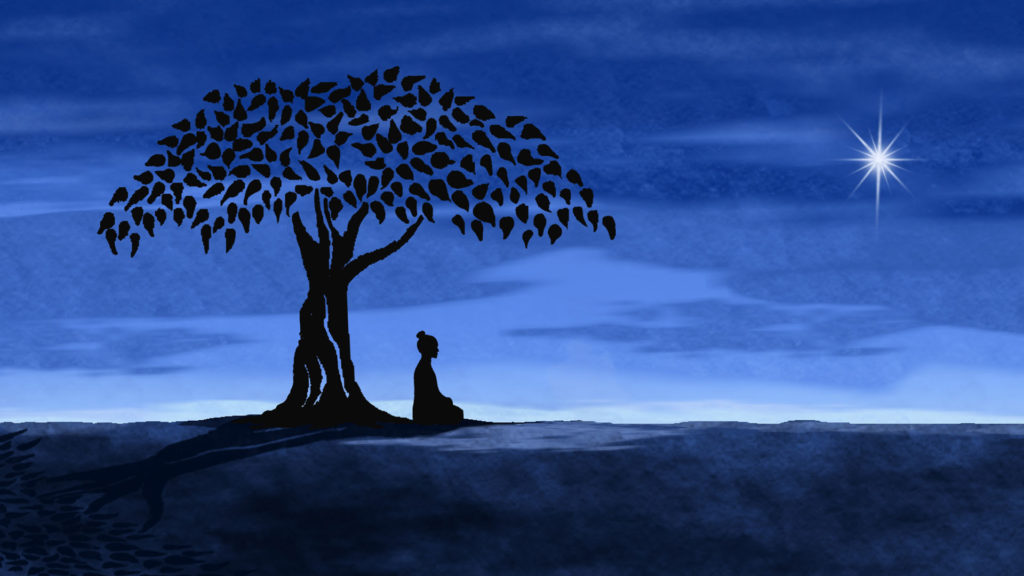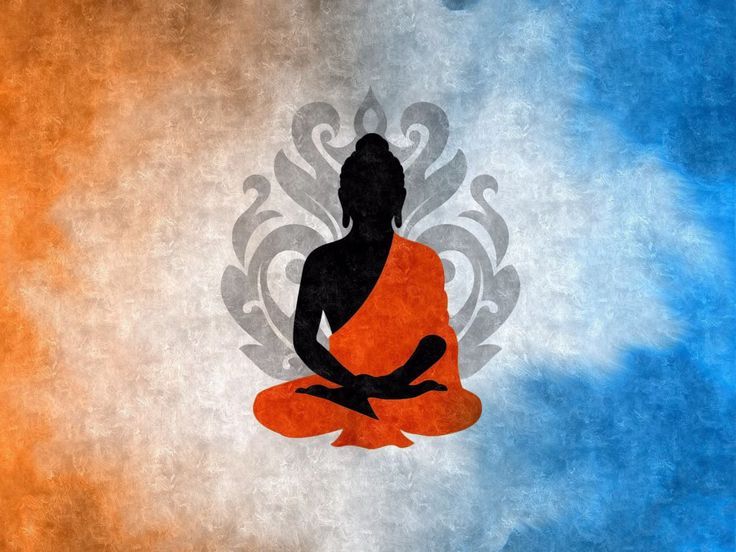Buddha can refer to the historical Buddha Siddhārtha Gautama (Shakyamuni Gotama in Japanese) or to anyone who has attained full enlightenment.
A Buddha is a person who is completely free from all faults and mental obstructions.
In general ‘Buddha’ means ‘Awakened One’, someone who has awakened from the sleep of ignorance and sees things as they really are. A Buddha is a person who is completely free from all faults and mental obstructions.
There are many people who have become Buddhas in the past, and many people will become Buddhas in the future. There is nothing that Buddha does not know. Because he has awakened from the sleep of ignorance and has removed all obstructions from his mind, he knows everything of the past, present, and future, directly and simultaneously. Buddha has great compassion which is completely impartial, embracing all living beings without discrimination.
Buddha Siddhārtha Gautama
Buddha Siddhārtha Gautama
The Buddha was born in the Lumbini woods, near the town of Kapilavastu (in modern day Nepal near the Indian border). His birth name was Siddhārtha Gautama (Shakyamuni Gotama in Japanese). Even though he lived for about eighty years, the dates of his birth and death are not established with certainty. Most Historians say he was born in 563 BC and died in 486 BC.
People don't really know who Buddha was, and contrary to what most people in the Western world think, he was neither a God nor a legend. He was simply a real man that lived 2500 years ago in India.
Gautama's father, Suddhodana Gautama, was the leader of the warrior class of Kapilavastu. Gautama's mother, Queen Māyā (Māyādevī) died shortly after his birth, and he was raised in luxury by his father and his father's new wife.
Gautama showed an early taste for meditation, reflection, and self-growth. By his father's wishes, he married young and took part in the public life of the king's court. He had a son whom he named Rahula.
Gautama began his quest for Enlightenment at the age of twenty-nine when he managed to go outside the palace walls. Throughout Gautama's entire life before this, his father had constantly kept him inside the palace walls to protect him from suffering and the reality of the world.
On his first visit outside the palace, he came across an entirely new reality, a world that he never knew existed. He saw the suffering of a newborn baby, a sick man, an old man, and a rotting corpse. He suddenly realised that suffering is common to all of humanity.
After making the acquaintance of a mendicant monk, he calmly and peacefully decided to abandon his family, wealth, and power to achieve Enlightenment. Buddhists call this decision "The Great Renunciation", and they consider it a turning point in history.
One night, having made his decision, Gautama left the gigantic palace, abandoning his wife and child to travel the world in search of Enlightenment. He travelled as a beggar in northern India and followed the teachings of many gurus, but he soon found himself dissatisfied.
He continued his quest for Truth as he finally settled in the town of Uruvela, near Gaya, with five men as his disciples who all shared his same goal. Together, they sought to achieve Enlightenment through an incredibly severe practice that involved total deprivation of worldly goods, meditating 10 hours a day, eating only a few grains of rice a day, never talking, and sleeping very little.
One day, after becoming so starved and so weakened from his ascetic practice, he finally collapsed. He was helped by a village girl named Sujata who fed him milk and rice pudding to restore his health. This event made him realize that the extreme lifestyle he was living was very unbalanced and would not bring him Enlightenment.
Buddha developed a practice and way of life that he called "The Middle Way," a path of moderation away from the extremes in every aspect of life.
He gradually recovered his health by stopping his extreme practice, though he lost his five disciples who accused him of being a "quitter". Those six years of self-mortification made him understand that extreme asceticism doesn't work and that in all things, balance is necessary.
In response to his experience, he developed a practice and way of life that he called "The Middle Way", a path of moderation away from the extremes in every aspect of life.

Statues of Buddha did not show up until about 2000 years ago (400 years or more after Buddha's career). For several centuries these visual representations were primarily symbolic and does not represent a true depiction of Buddha Siddhārtha Gautama.
Buddha, The Awakened One






